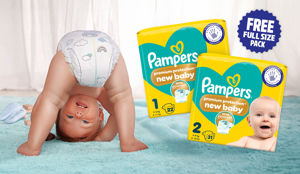A cord knot in a baby's umbilical cord sometimes forms during pregnancy when your baby moves around in the amniotic sac. Some other knots can form during labour and delivery.
Umbilical cord knots occur in one in every hundred pregnancies. More common than cord knots are nuchal loops, which is when the cord wraps around a baby's neck. These occur in around a quarter of all pregnancies but are rarely dangerous to your baby.
Decreased activity after week 37 is the most common sign of a cord knot. If the knot occurs during labour a foetal monitor will detect an abnormal heart rate. Babies with long cords and small babies are at greater risk for developing a cord knot.
Carrying identical twins who share the same amniotic sac, or having a condition called hydramnios, may make you more prone to having a pregnancy with a cord knot.
Should you be concerned?
A substance called Wharton's jelly provides cushioning around the important blood vessels of the cord and protects them even if the cord gets knotted. This means that the odds are in your favour that a true tight knot won't occur.
As long as the knot remains loose, it won't cause harm to your baby. But if the knot becomes tight, it could interfere with the circulation of blood from the placenta to the baby and cause oxygen deprivation. Such a complication is most likely to occur during your baby's descent through the birth canal, but these cases are rare.
Can you do anything to prevent cord knots?
There is nothing you can do to prevent a knotted umbilical cord. You can, however, keep a general eye on how your baby is doing, especially later in your pregnancy, by doing regular kick counts and calling your midwife if you notice any change in foetal activity.
If a loose knot tightens during delivery, your midwife will be able to detect the drop in your baby's heart rate and will make the appropriate decisions to ensure your baby's safe entry into the world. Immediate delivery, usually via C-section, is often the best approach.





